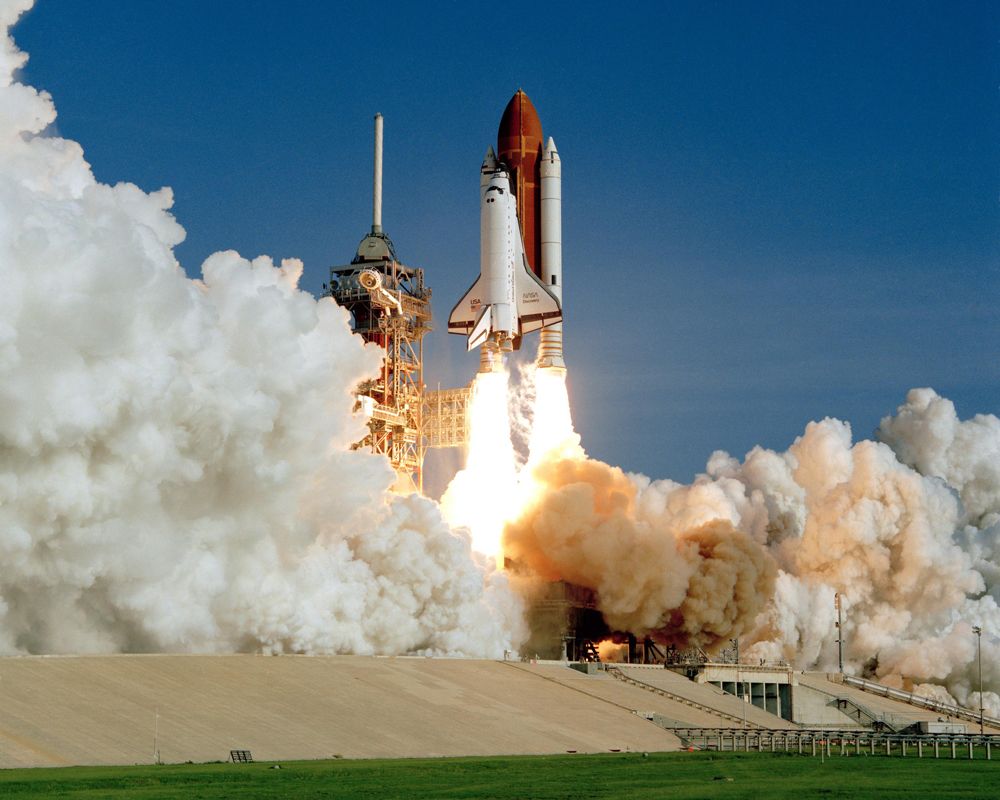


Four years ago, he began scanning the film, rediscovering the images. Friends and colleagues encouraged him to take a fresh look at the photos he took more than a quarter century earlier. "It was hard to continue the work after witnessing this accident, and I decided to set the project aside."Ĭhakeres' film negatives remained in storage, unseen and never printed until 2013, two years after the 135th and final space shuttle mission. "It ended with the Challenger accident in 1986," Chakeres explains. The project grew out of a life-long fascination with human spaceflight - which is why what happened on the 25th space shuttle mission made Chakeres step away from photographing the shuttle. (Kickstarter/John Chakeres)Ĭhakeres, who by 1981 had already published two books of his landscape and art photography, followed the space shuttles and NASA's launch preparations at the Kennedy Space Center in Florida over the course of the fleet's first 24 missions. John Chakeres photographed NASA's space shuttle orbiters at the Kennedy Space Center in Florida. "I was intrigued by how its design created a unique looking vehicle, and its final form was determined by its function."

"The space shuttle, in one sense, was a piece of sculpture to me," he said. "The fact the space shuttle was the most complex machine ever created compelled me to photograph it." The idea was to do more of a portrait of the space shuttle," Chakeres writes of the project on Kickstarter. "I wanted to create images that were majestic, symbolic, and gave the viewer a sense of what was required to fly such a complex piece of technology.

In 1981, Chakeres embarked on a project to document the now-retired fleet of winged orbiters, just as NASA prepared to launch its first space shuttle mission. "First Fleet: NASA's Space Shuttle Program 1981-1986," a collection of John Chakeres' photographs, will be released by Daylight Books in the fall of 2018, pending the outcome of a Kickstarter crowdfunding campaign nearing its end. Here we explore the Space Shuttle through a collection of pictures from inside the spacecraft.– A photographer's long-forgotten, seldom seen images of NASA's first space shuttles are now set for publication, 30 years after they were captured. The Space Shuttle program was finally completed in 2011. Because of budget cuts, NASA utilised the space shuttles longer than originally planned, cancelling the development of newer, improved models. Technical and organisational issues caused the destruction of the shuttles and the death of both crews. Tragedy would strike the Space Shuttle program twice, with the Challenger and Endeavour disasters in 19 respectively. It performed some test flights, but never made it it past the atmosphere – that honour went to the Columbia in 1981. Four years later the first shuttle, named Enterprise, was rolled out. The first shuttle was launched in the early 1980s, but the program has its roots in the Nixon era, when NASA‘s post- Apollo direction was announced on January 1972. They were true masterpieces in engineering, designed to expand human limits in outer space. Between 19, 135 missions were performed by the Columbia, Challenger, Discovery, Atlantis and Endeavour shuttles. The Space Shuttle was the first ever reusable spacecraft, used to carry, recover and repair satellites, perform complicated experiments and help to construct the most expensive building project in human history – the International Space Station.


 0 kommentar(er)
0 kommentar(er)
